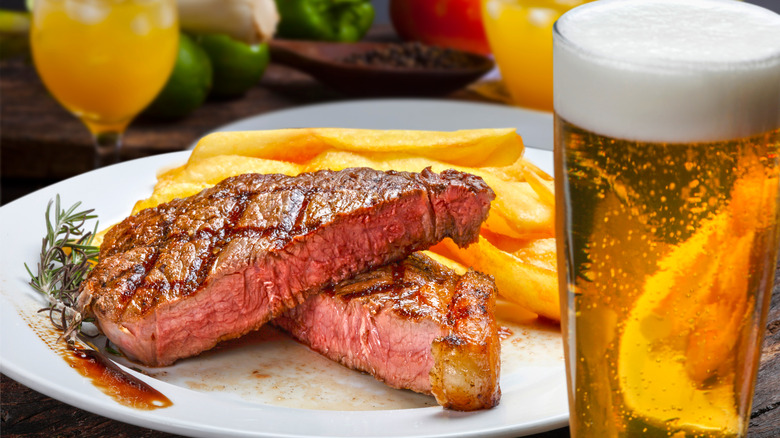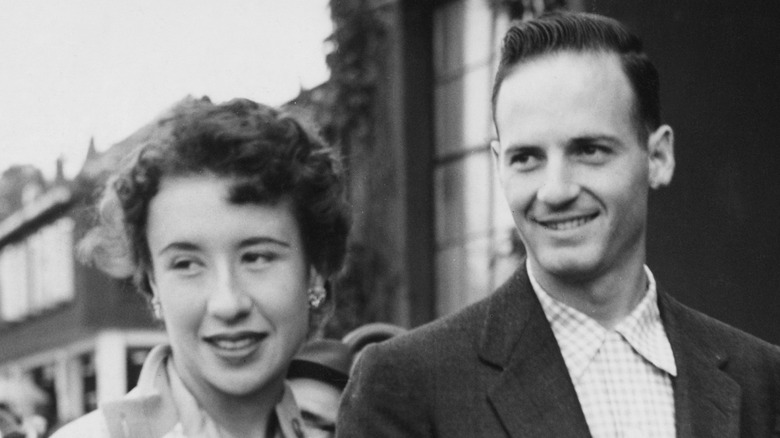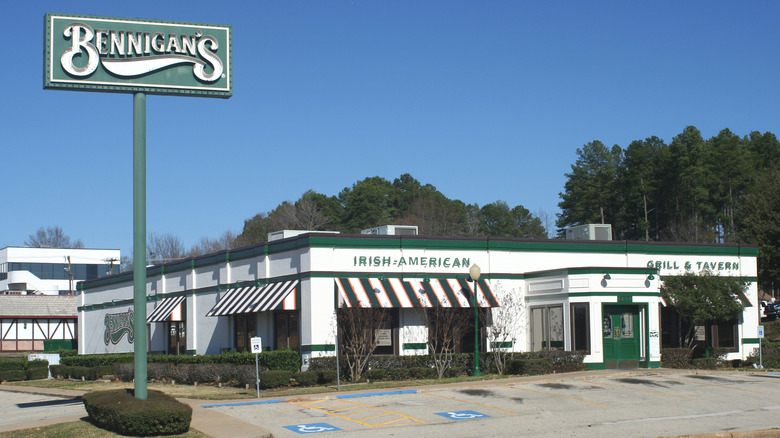Whatever Happened To Restaurant Chain Steak And Ale?
What is it about bygone restaurants that so captures the imagination? Is it just nostalgia or do restaurants inhabit a special corner of our memory? Shuttered eateries reach out through aromas and tastes and reminders of dining rooms and staff that made us feel welcome and satisfied.
If you're from Michigan, you may pine for the rich ham croquettes made from scratch at Bill Knapp's. New Yorkers of a certain age might fondly recall the orange beverage and tangy relish-smothered hot dogs at Nedick's. Still, Texans and others may remember the invitingly-dim interior of a chain known as Steak and Ale.
Despite the anachronistic name and Tudor décor that were hallmarks of Steak and Ale, the chain was frequently ahead of its time, an innovator of restaurant trends that persist to this day. Steak and Ale ushered in an era of casual dining, and its DNA is evident today in chains like Fridays, Chili's, and Applebee's.
According to the University of Houston, those concepts pioneered by Steak and Ale include the serve-yourself salad bar and exceedingly-personable service standards. The idea was to bridge the gulf between no-frills fast food and haute fine dining for America's growing middle class.
So, what happened to drive Steak and Ale out of the market?
A pioneering founder
Norman Brinker is a recognizable name to anyone in the restaurant industry. Today, the eponymous Brinker International, Inc. owns and operates the popular Chili's and Maggiano's Little Italy concepts, according to the company's investor profile. But he was making a name for himself long before those chains rose to prominence.
Brinker's first success came with Jack in the Box, according to the Dallas Morning News. He helped what was then a Southern California fast-food chain become a regional hit before selling his shares when the company went public. Brinker then relocated to Texas and launched a coffee shop called Brink's, a success that he also sold. It was then that he hit on the idea of a restaurant offering the quality food and atmosphere of a high-end steakhouse at a more approachable price point. Steak and Ale was launched in 1966.
The menu boasted a host of signature items informed by the dining of the era. Per this vintage 1968 menu, prime rib was offered in both queen's (small) and king's (large) cuts, London broil was topped with mushroom gravy, and the house specialty was the Kensington Club, a top sirloin in a "gourmet marinade." According to Recipe Cart, the marinade contained, among other things, soy sauce, pineapple juice, sherry, and garlic.
Brinker grew Steak and Ale to a total of 109 locations before he sold the business to Pillsbury, which at the time had a portfolio of restaurants that included Burger King (via New York Times).
A victim of its own success
Ultimately, Steak and Ale was a victim of its own success. The casual dining concept was much-imitated and further developed, notably by Brinker himself who created Bennigan's while serving as an executive with Pillsbury's restaurant division (via The Seattle Times). Steak and Ale, along with Bennigan's, was eventually sold to MetroMedia Restaurant Group in 1993. But by then the once innovative service style was ubiquitous and public tastes were turning away from rich meat-and-potatoes fare. In 2008, S&A Restaurant Group, which operated Steak and Ale, Bennigan's, and MetroMedia's Bonanza and Ponderosa Steakhouse chains, filed for bankruptcy and all Steak and Ale locations shuttered, according to CNN.
But nostalgia and fond memories persist. In 2015, former Bennigan's executive Paul Mangiamele, along with his wife, Gwen, purchased Bennigan's and Steak and Ale with a plan to relaunch the latter (via The Dallas Morning News.) While no outposts of the chain have yet opened, National Restaurant News noted in 2018 that Bennigan's menu was expanding to include updated versions of iconic Steak and Ale dishes, such as the Kensington Club and Hawaiian Chicken.


